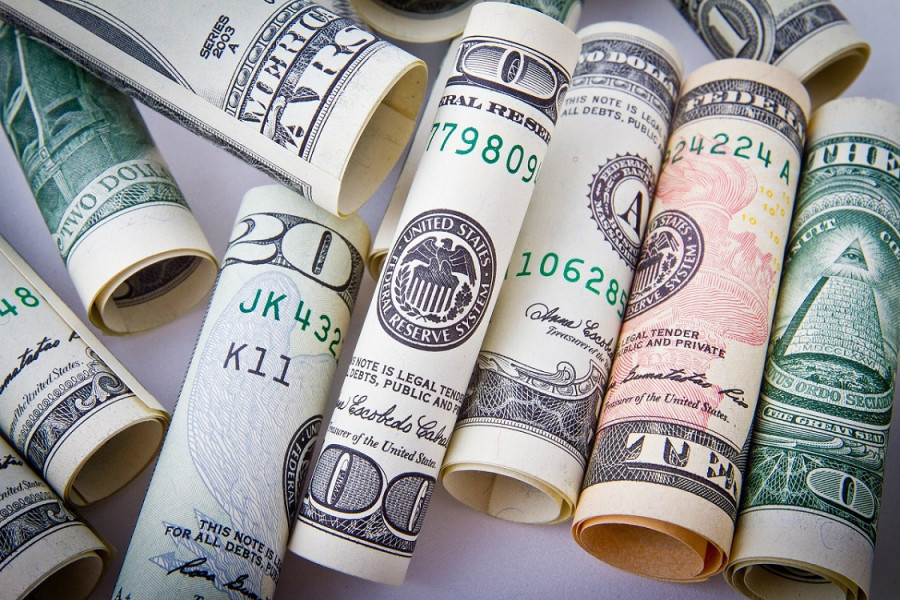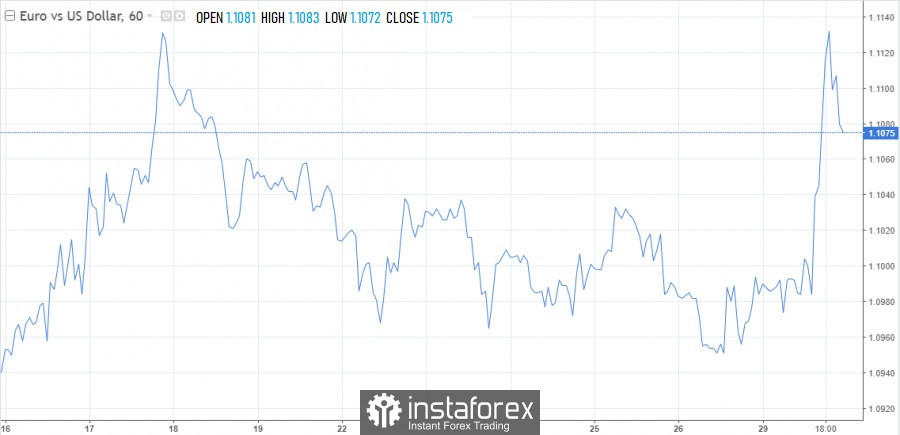

These days, apart from negotiations on Ukraine, the focus of traders' attention will be on macroeconomic data. The markets were assessing the first serious batch of reports from America and Europe on Wednesday. The US Department of Commerce has worsened its estimate of the country's GDP growth in the fourth quarter to 6.9% in annual terms. Meanwhile, the markets were counting on an improvement of up to 7.1%.
The number of jobs in private American companies increased by 455,000 in March with a forecast increase of 450,000. The February estimate was adjusted to 486,000 from the initial value of 475,000.
Friday's payrolls are not expected to cause discomfort in the market. Most likely, they will be strong. A stable labor market will allow the Federal Reserve to raise interest rates more sharply. Judging by the futures market, investors are already pricing in such a scenario. Therefore, the impact of the key employment report may be mediocre.
Euro traders are assessing the picture of inflation in Germany, and as long as bulls do not loosen their grip, the EUR/USD exchange rate is growing. Inflation reached a historical record in March, increasing to 7.3% in annual terms. Previously, the highest rate in Germany was recorded in March-May 1992, when it was 6.2%. Of course, high energy prices played a role here.
The overall indicator for the eurozone will be published at the end of the week, but it is already clear how alarming the situation with prices in the eurozone is. This means that the European Central Bank may start raising rates this year.
The EUR/USD pair remains bullish, although hopes for an early resolution of the Ukrainian crisis have almost faded. The information is extremely contradictory, no one really knows what is happening. In other words, there is the very uncertainty that the markets are so afraid of. In case of a drawdown below 1.1070, the bears will have the initiative again. Support levels are located at 1.1115, 1.1070, 1.1020. Resistance levels are at 1.1150, 1.1190, 1.1230.

In contrast to the euro, the fact that new cracks are appearing in the eurobloc economy plays a role. The gas problem can also be attributed here. An energy product from Russia needs to be bought for rubles, and the eurozone resists. In Germany, they announced the activation of the emergency early warning mode in connection with the possible termination of gas supplies from Russia. The consequences can be more than serious. Among others, German politicians call mass unemployment.
However, news has already appeared about the talks between Vladimir Putin and Olaf Scholz. The German side may consider the possibility of ruble payments for Russian gas.
The gas theme is important for the positioning of the European currency, however, as analysts note, it makes sense to sell the euro only if Europe turns off gas. While the dialogue is going on (no matter in what key), you need to keep your finger on the pulse.
The formation of short positions on the EUR/USD pair still makes sense, while it is not necessary to exclude a jerk of the quote up to the 1.1300 mark.
On the euro bulls' side, including the correction of the US dollar. The euro's position will deteriorate as soon as it continues the upward trend. The question is when this upward trend will manifest itself.
The dollar index on the daily chart formed an interesting range at 97.80-99.40. Such a pattern often indicates a continuation of the trend. Short positions on the dollar have recently been rapid, we are talking about being oversold. A rebound from the 97.80 mark looks logical. The dollar has a chance to settle above 98.00 points again.